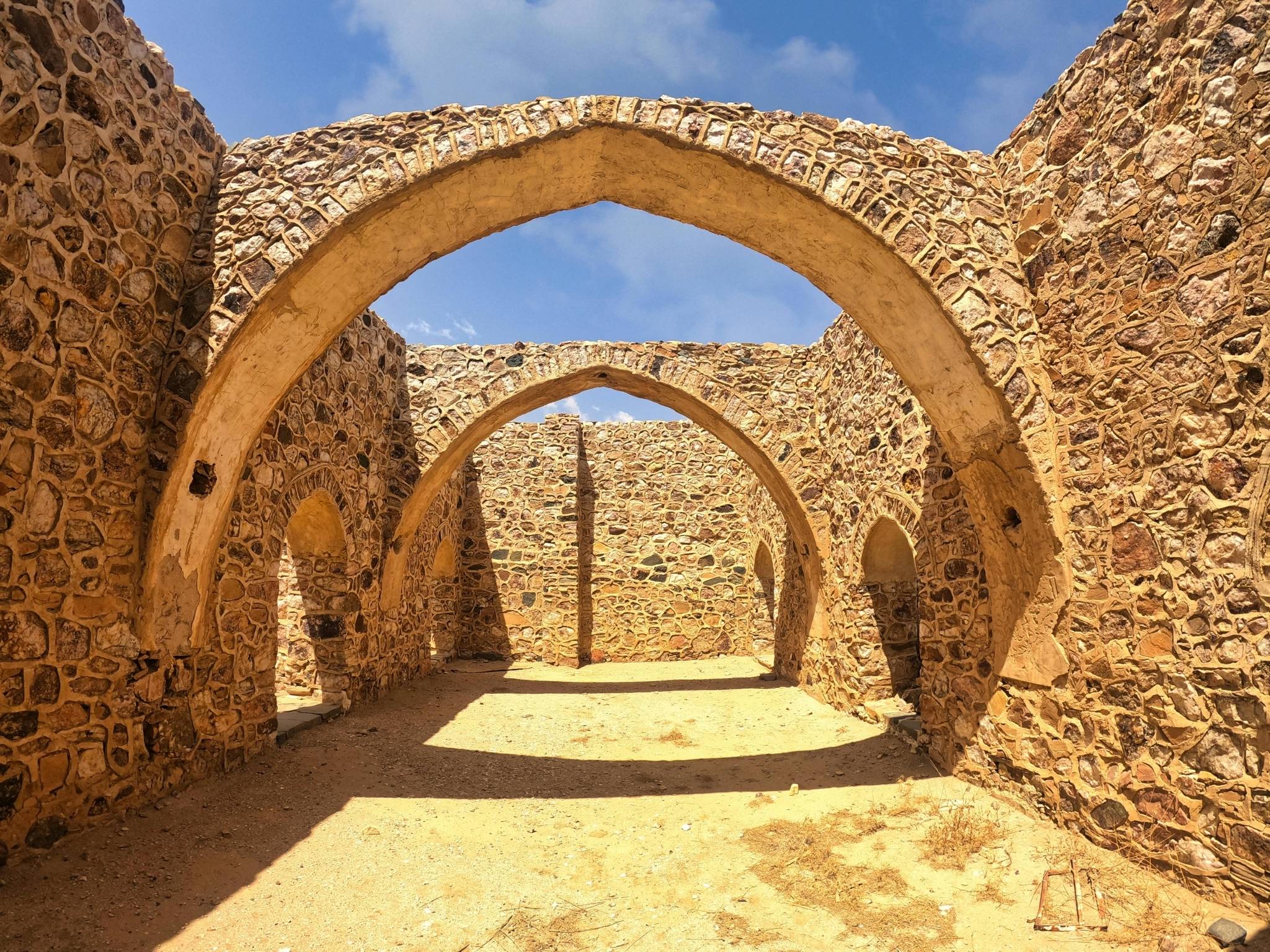
AL OMAR HAJJ AND UMRAH SERVICES
Taif Ziyarah: A Guide to Historical and Religious Sites
This document provides a guide to some of the most significant historical and religious sites in Taif, Saudi Arabia, offering a glimpse into the city's rich past and its importance in Islamic history. From mosques and historical houses to gardens and natural landmarks, this guide aims to highlight the key places to visit during a ziyarah to Taif.
Historical and Religious Sites in Taif
- Taif, located in the Makkah Province of Saudi Arabia, is a city steeped in history and religious significance. Its cooler climate and fertile lands have made it a popular destination throughout the ages. For Muslims, Taif holds a special place due to its connection with Our Prophet Mohammed صَلَّى ٱللَّٰهُ عَلَيْهِ وَسَلَّمَ . Here are some notable sites to consider visiting:
- This mosque is one of the most prominent landmarks in Taif. It is named after Abdullah Ibn Abbas, a cousin of Our Prophet Mohammed صَلَّى ٱللَّٰهُ عَلَيْهِ وَسَلَّمَ and a renowned scholar of the Quran. He is buried within the mosque complex.
- Significance: The mosque is a place of great historical and religious importance. Abdullah Ibn Abbas's (R.A) knowledge and contributions to Islamic jurisprudence make this site a significant place for reflection and learning.
- Features: The mosque features traditional Islamic architecture, with a large prayer hall, a minaret, and a courtyard. The tomb of Abdullah Ibn Abbas (R.A) is a focal point for visitors.
- Visiting: The mosque is open to visitors for prayers and to pay respects to Abdullah Ibn Abbas (R.A) . It is advisable to dress modestly and maintain a respectful demeanor.
- This farm is believed to be the location where the Prophet Muhammad (peace be upon him) sought refuge after facing persecution in Makkah. He was offered grapes by Addas, a Christian servant, who was moved by the Prophet's message and character
- Significance: This site represents a pivotal moment in the Prophet's life, highlighting his resilience and the early challenges faced in spreading Islam. It also symbolizes the potential for understanding and acceptance between different faiths.
- Visiting: Visitors can walk through the garden, reflect on the Prophet's journey, and appreciate the natural beauty of the area.
- Taif Old City is a historic and culturally rich area located in the mountainous region of Taif, Saudi Arabia. Known for its cool climate, beautiful landscapes, and traditional architecture, it has long been an important center for trade, agriculture, and pilgrimage.
- One well-known place is the Taif Camel Farm, which offers fresh camel milk and sometimes allows visitors to see camels and learn about camel farming.
- The museum offers visitors an immersive experience to understand the cultural and historical museum that showcases the rich heritage, traditions, and history of the Taif region and Saudi Arabia more broadly. It typically features displays related to traditional Saudi life, including artifacts, antiques, old tools, clothing, and sometimes exhibits on agriculture, commerce, and the lifestyle of the local people
- Hudaybiyyah is known as a historical site near Mecca, famous for the Treaty of Hudaybiyyah during the time of Our Prophet Mohammed صَلَّى ٱللَّٰهُ عَلَيْهِ وَسَلَّمَ
- historic mosque located in Taif, Saudi Arabia. The name "al-Qantara" means "the bridge" or "the arch," which often refers to a structure with an arch or a bridge nearby, indicating either the architectural style or its location near an old bridge or water channel.
- This mosque marks the spot where Prophet Muhammad (PBUH) rested after the harsh treatment he received when he went to Taif to invite its people to Islam. The people of Taif initially rejected and physically attacked him, forcing him to seek refuge under a tree outside the city.
- one of the notable mosques in the city. The name "Al Rasool" means "The Prophet," referring to Prophet Muhammad (PBUH). The mosque serves as a local place of worship for residents and visitors in Taif.
- The mosque's name, "Al-Kou'," refers to the stone with the Prophet's alleged elbow mark, highlighting a specific connection to the Prophet's presence.
- This dam is one of several infrastructure projects in the region aimed at water conservation, flood control, and sometimes irrigation support.
- Qarn al-Manazil : one of the five major Miqats established by the Our Prophet Mohammed صَلَّى ٱللَّٰهُ عَلَيْهِ وَسَلَّمَ . It is the Miqat for people coming from the direction of Najd (central Saudi Arabia). Located about 94 km from Makkah on the road from Taif or Najd.
- Al Sail al Kabir : This Miqat is for pilgrims coming from the direction of Medina (north). Located about 18 km from Medina city.
- Etiquette of Ziyarah
- When performing Ziyarah, it is essential to observe proper Islamic etiquette to show respect for the sacred sites and enhance the spiritual experience. Here are some guidelines:
- Maintain Cleanliness: Ensure personal hygiene and avoid littering. Keep the sacred sites clean and pristine.
- Lower Your Voice: Speak softly and avoid loud conversations or arguments. Maintain a respectful and reverent atmosphere.
- Dress Modestly: Wear modest clothing that covers the body appropriately. Avoid revealing or tight-fitting garments.
- Avoid Photography and Videography: In some areas, photography and videography may be restricted or discouraged. Respect these guidelines and avoid taking pictures that may disturb others.
- Be Mindful of Others: Be considerate of other pilgrims and avoid pushing or shoving. Offer assistance to those in need
- Refrain from Worldly Discussions: Focus on remembrance of Allah (SWT) and reflection on the significance of the sites. Avoid engaging in idle gossip or worldly discussions.
- Make Dua (Supplication): Take advantage of the opportunity to make sincere supplications to Allah (SWT) at these blessed locations
- Avoid Innovations (Bid'ah): Stick to the practices that are authentically prescribed in the Quran and Sunnah. Avoid engaging in rituals or practices that have no basis in Islamic teachings.
- Preparing for Ziyarah
- Before embarking on the Ziyarah, it is important to prepare both physically and spiritually. This includes:
- Learning about the rituals and sites: Familiarize yourself with the rituals of Umrah and the history and significance of the sites you plan to visit. Please checkout our website, we provide complete umrah guide
- Packing appropriately: Pack comfortable and modest clothing, as well as any necessary medications.
- Making intentions: Make a sincere intention to perform the Ziyarah for the sake of Allah and to seek His pleasure.
- Repenting for sins: Seek forgiveness for any sins you may have committed and resolve to live a better life.
- Learning basic Arabic phrases: Knowing some basic Arabic phrases can be helpful for communication.
- Stay Hydrated: Drink plenty of water, especially when visiting outdoor sites during hot weather.
- Wear Comfortable Shoes: Wear comfortable shoes suitable for walking and climbing.
- Conclusion
- A ziyarah to Taif offers a unique opportunity to connect with Islamic history and appreciate the natural beauty of the region. By visiting these historical and religious sites, one can gain a deeper understanding of the challenges faced by the Prophet Muhammad (peace be upon him) and the early Muslims, as well as the rich cultural heritage of Taif. This guide provides a starting point for planning a meaningful and enriching visit to this significant city.
-
1. Masjid Abdullah Ibn Abbas –
-
2. Addas Farm (Garden of the Grapes) –
-
3. Old City of Taif –
-
4. Camel Milk Farm –
-
5. Amudhi Museum –
-
6. Treaty of Hudaybiyyah –
-
7. Masjid al-Qantara –
-
8. Masjid Ash Shajara –
-
9. Masjid Al Rasool –
-
10. Masjid al-Kou –
-
11. Ikrima Dam –
-
12. Miqat at Qarn al-Manazil and Al Sail Al Kabir –


